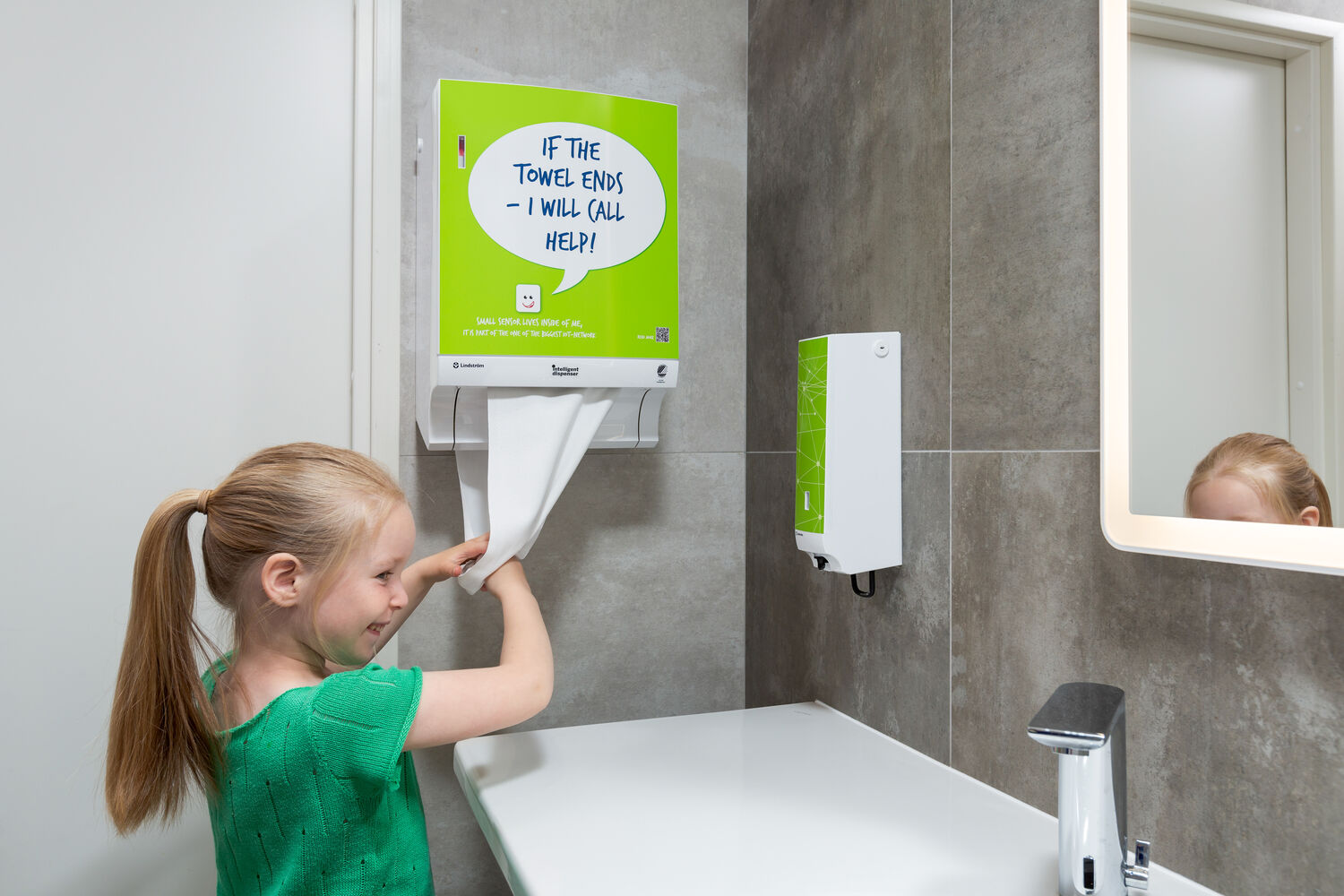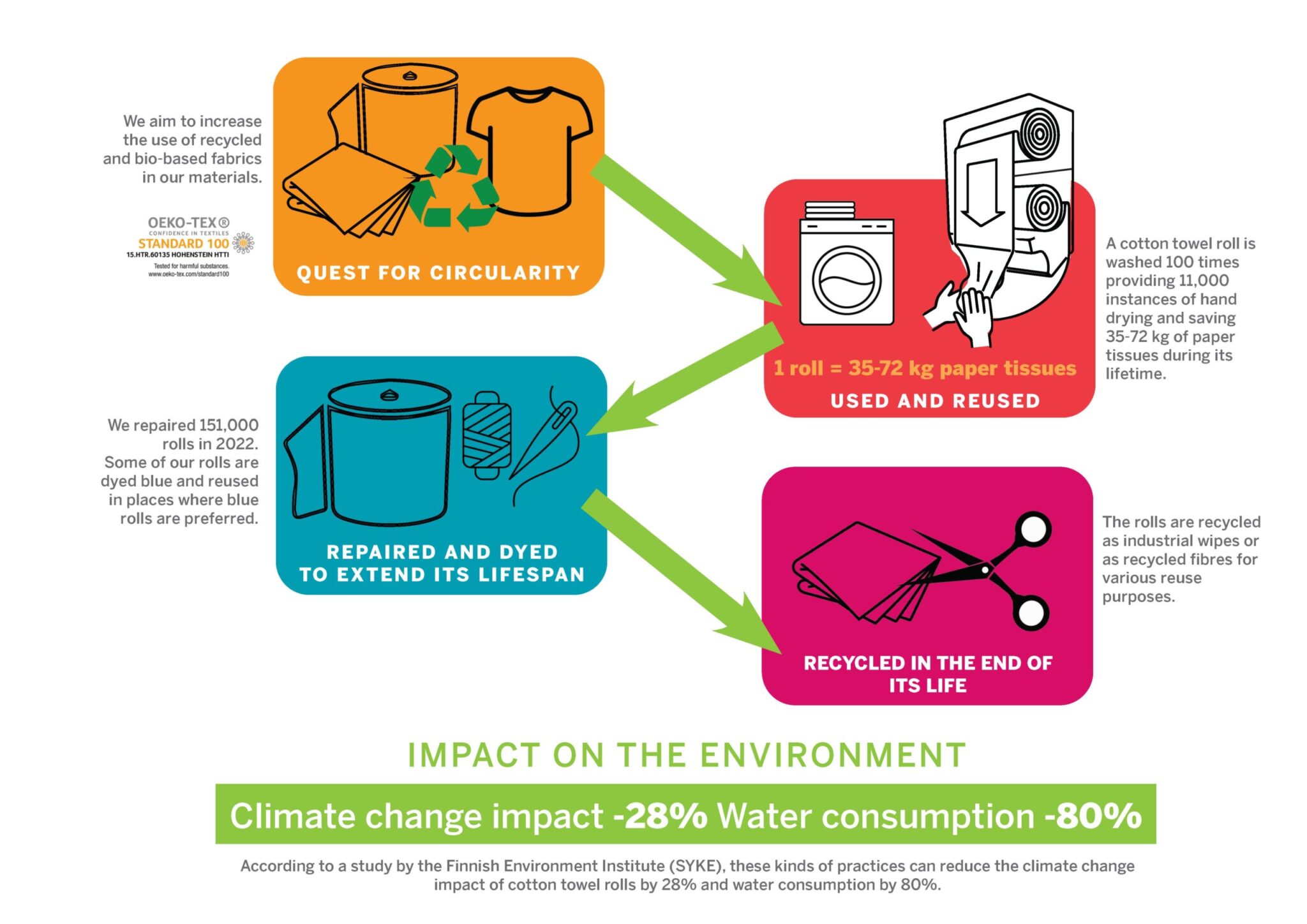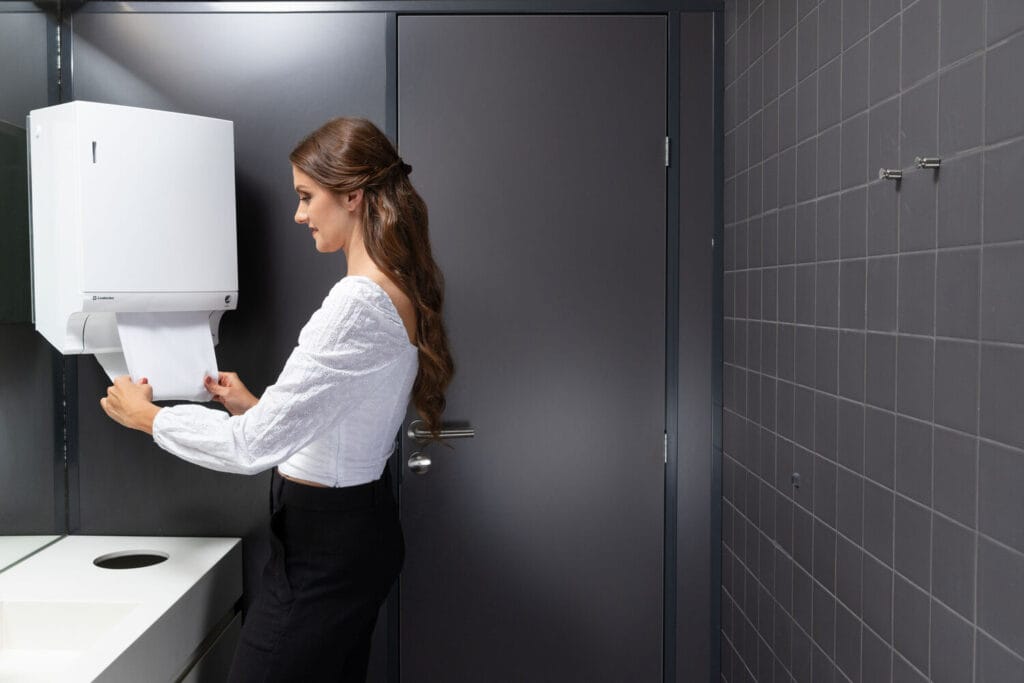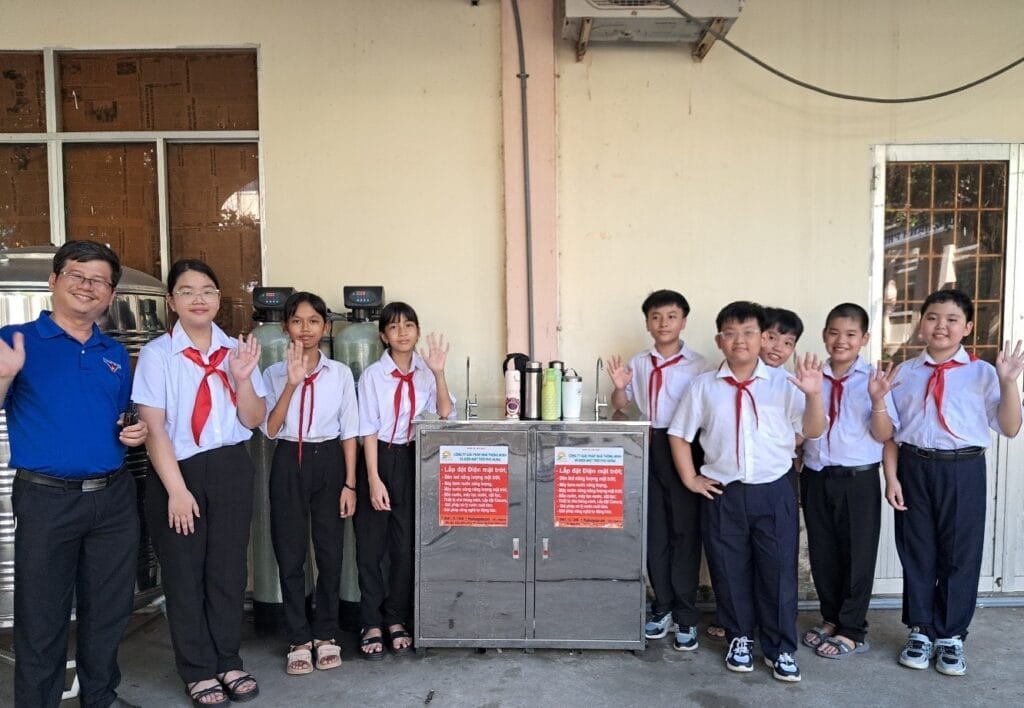
Cotton towel roll – advances circularity in washrooms
The cotton towel roll has lived and breathed circular economy practices for decades. During its lifespan, it is used and reused several times. It goes through 100 washes and provides 11,000 instances of hand drying. For several decades, its lifespan has been extended via repair and by dying rolls blue and using them in dirtier environments. As early as the 1990s, end-of-life cotton towel rolls started to get one more life in the form of industrial wipers, where washable wipers could not be used.
More recently, in the Finix project at Aalto University, a new fibre called Ioncell was produced from our cotton towel rolls. The new fibre turned out to be stronger than original virgin cotton, which made for interesting opportunities for the future of recycled materials. The ioncell fibre was tested in use when two Aalto university students used it as raw material when they were designing high fashion.
Last year, the collaboration with our recycling partner for Finland and the Baltics, Rester, got underway. Recycled fibre produced from our textile waste is used for different purposes. One of those outcomes is Toivo yarn, launched earlier this year by Vuonue.
A recent study by the Finnish Environment Institute (SYKE) showed that these kinds of practices have significant environmental impact. According to the study, reusing and recycling can reduce climate change impact by 28% and water consumption by 80%. The results indicate that reusability is the key to reducing environmental impact. It can be promoted, for example, by dying cotton towel rolls blue, a practice very familiar to us.
As the study proves, the major environmental impact of recycling is that it reduces the need for virgin material, such as cotton. It is a well-known fact that cotton cultivation requires a lot of water and land, which could be used for other purposes. That’s why we have also set a goal – not just recycling 100% of our textile waste but also increasing the use of recycled and biobased materials in our fabrics. Perhaps in the future, the cotton towel rolls that you see in washrooms will have lived a different life in another form.







